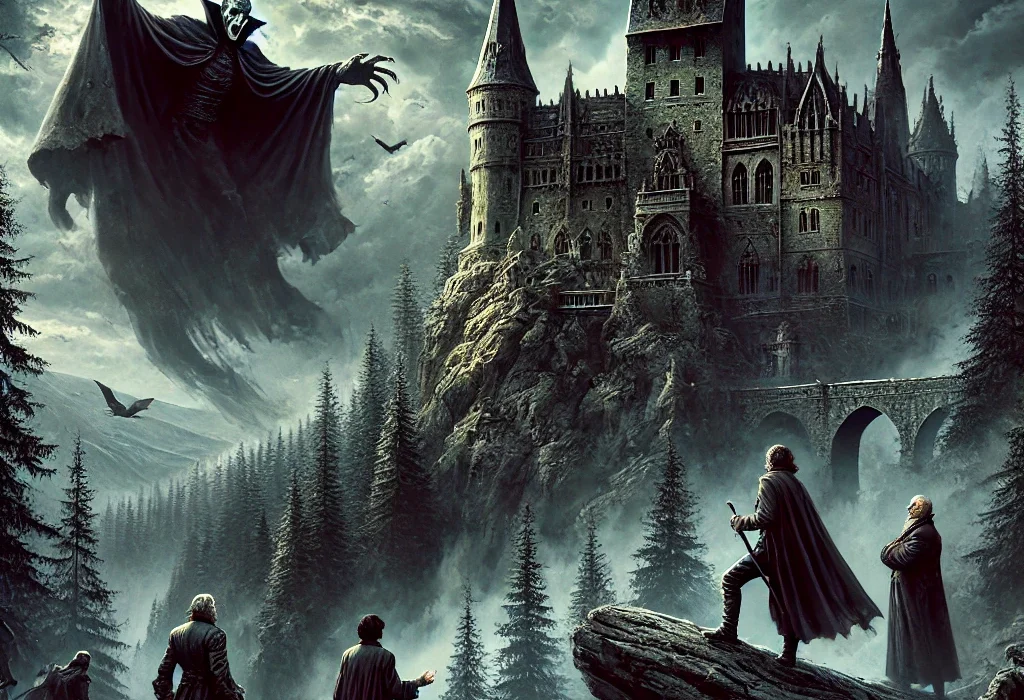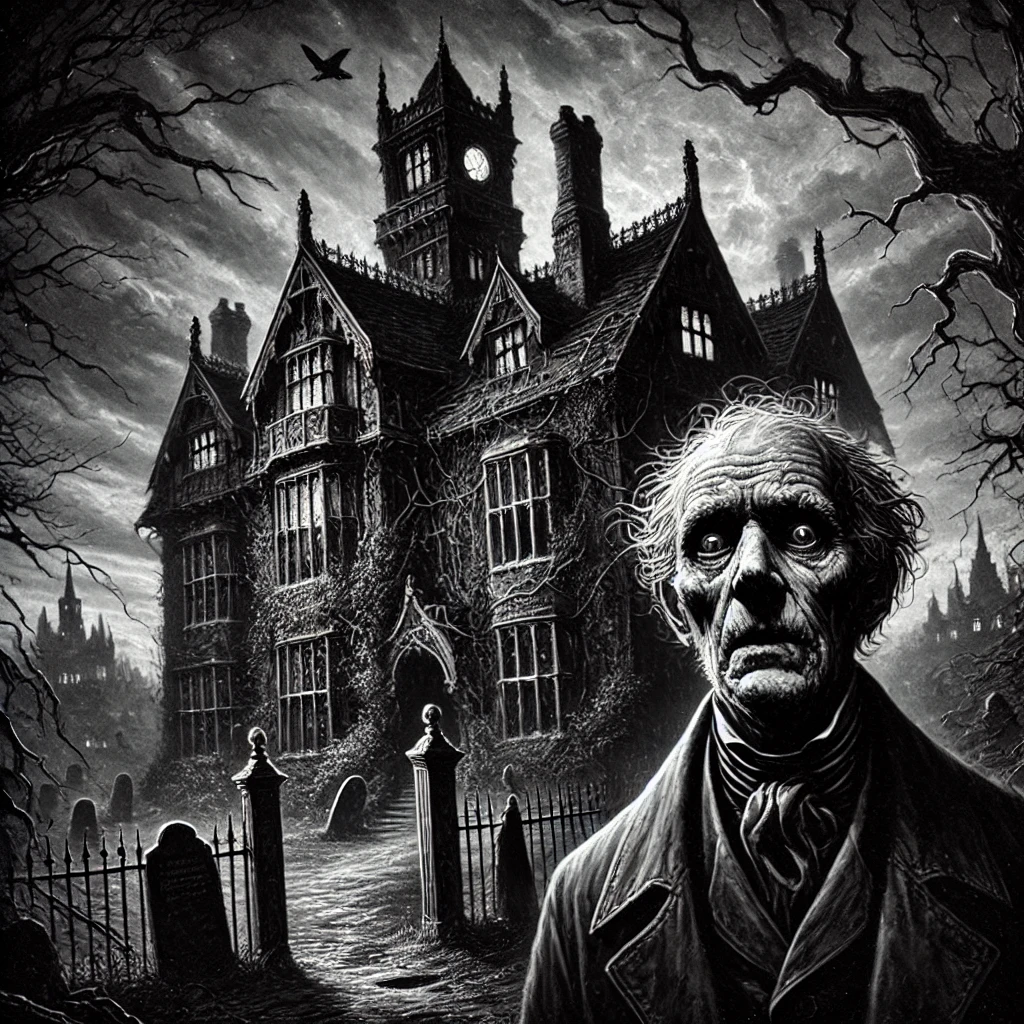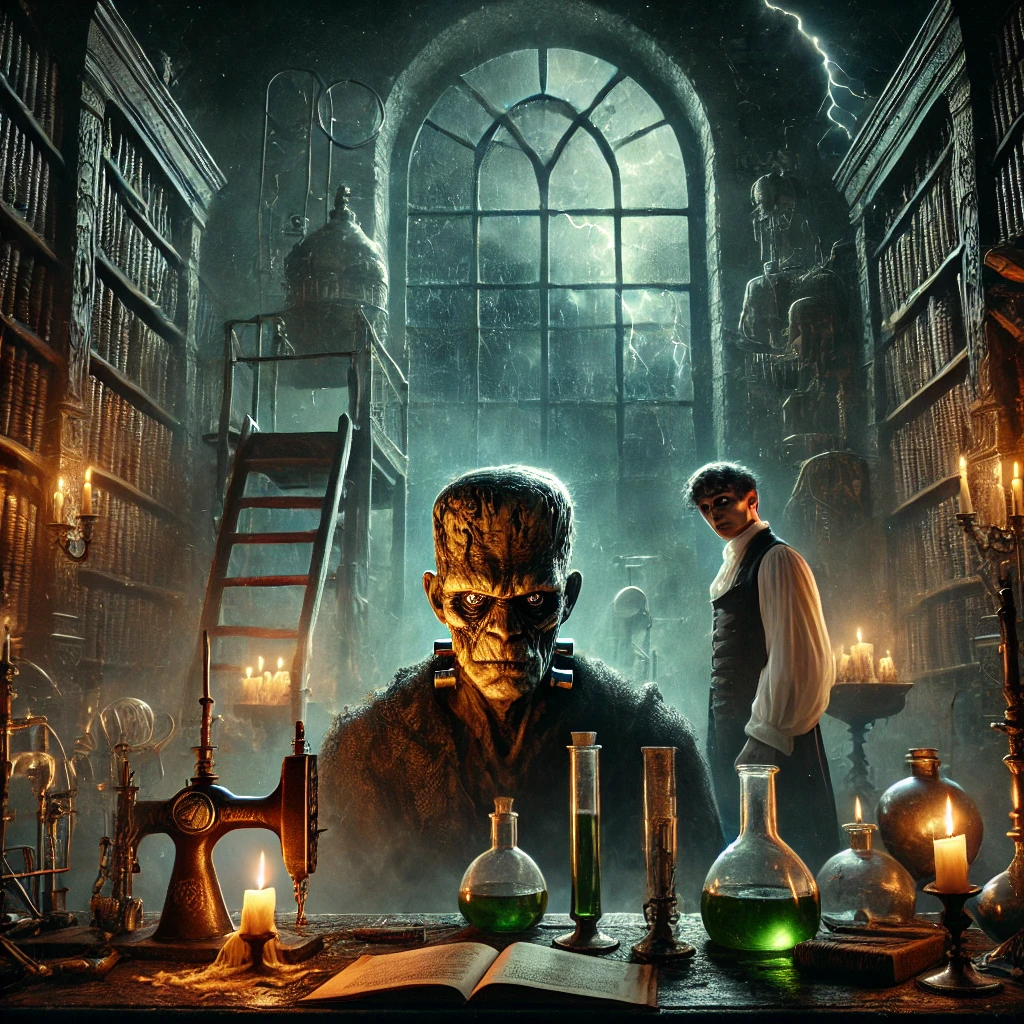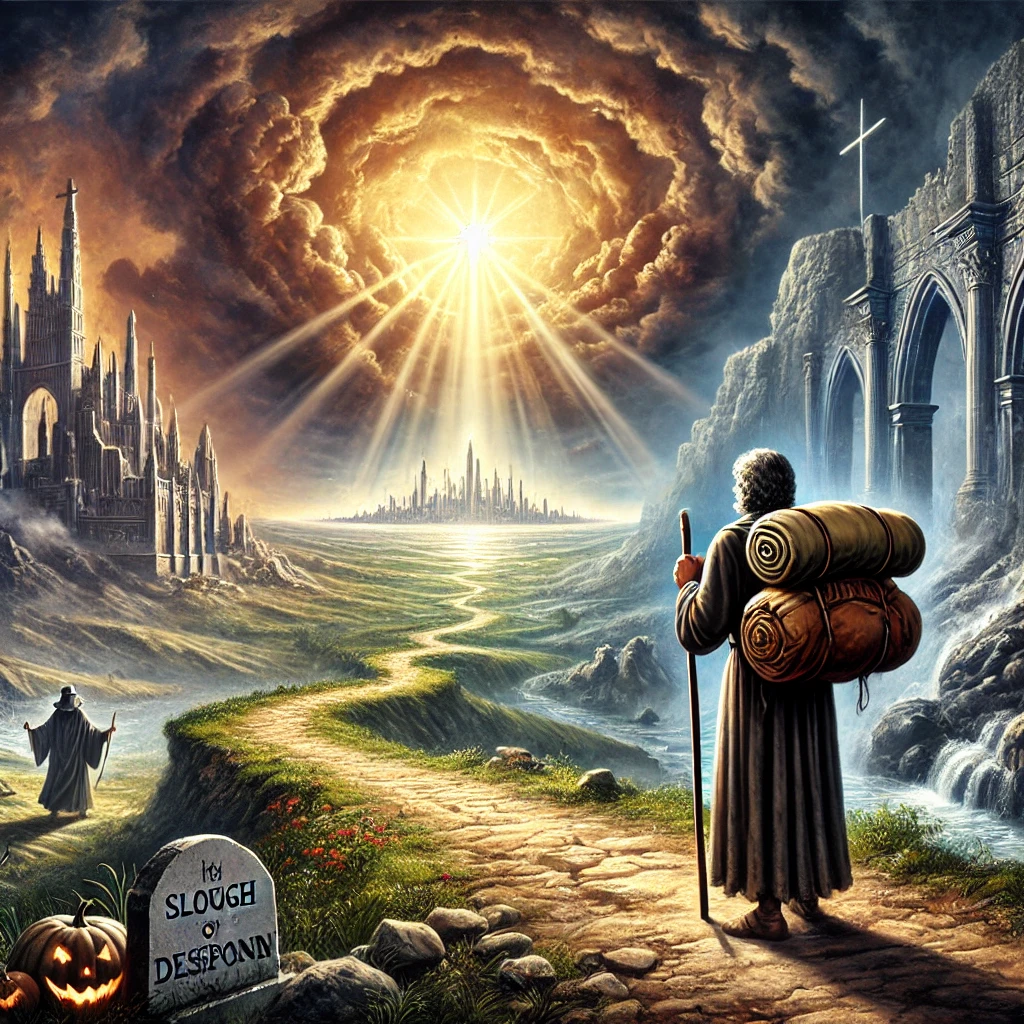Dracula is a Gothic horror novel by Irish author Bram Stoker, first published in 1897. It is an epistolary work, meaning the story is told through letters, diary entries, newspaper articles, and other documents. The novel chronicles the efforts of a group of people to stop Count Dracula, a centuries-old vampire, from establishing a foothold in England. The novel explores themes of fear, power, sexuality, and the unknown, and has significantly influenced the modern image of the vampire in popular culture.
Plot Summary
Jonathan Harker, a young solicitor, travels from London to the remote Transylvanian village of Bistritz. He is en route to Castle Dracula to assist Count Dracula with the purchase of an estate in England. The villagers he meets express fear and offer ominous warnings about the Count, but Harker dismisses them and continues his journey. Upon arriving at the castle, Harker is greeted by Count Dracula, an imposing figure with a hypnotic presence.
The castle is ancient and labyrinthine, filled with dark corridors and locked doors. Harker quickly realizes that he is more a prisoner than a guest. Dracula’s strange behaviors—his aversion to mirrors, absence during daylight, and superhuman strength—deepen Harker’s unease. Harker discovers Dracula’s secret: the Count is a vampire, a centuries-old creature who survives on human blood.
As days turn into weeks, Harker’s desperation grows. He observes Dracula’s nocturnal habits, including his ability to scale walls and transform into various creatures. Harker’s horror peaks when he finds Dracula’s coffins filled with earth, necessary for his supernatural powers. Desperate to escape, Harker scales the castle walls and flees, eventually finding refuge in a convent where he recuperates from his ordeal.
Meanwhile, in England, Harker’s fiancée, Mina Murray, and her friend Lucy Westenra are enjoying a seaside holiday in Whitby. Lucy, a beautiful young woman with a delicate constitution, begins to suffer from mysterious symptoms—severe blood loss and strange puncture wounds on her neck. Despite proposals from three men—Arthur Holmwood, Quincey Morris, and Dr. John Seward—Lucy’s condition worsens. Dr. Seward seeks help from his mentor, Professor Abraham Van Helsing, a doctor with extensive knowledge of obscure diseases and superstitions.
Van Helsing quickly deduces that Lucy is the victim of a vampire. Despite their best efforts—using garlic, crucifixes, and blood transfusions—Lucy succumbs to Dracula’s influence and dies. Soon after, she is seen wandering the graveyard, preying on children, confirming Van Helsing’s diagnosis.
Determined to save Lucy’s soul, Van Helsing leads Arthur, Seward, and Morris in a grim ritual to destroy the vampire she has become. They drive a stake through her heart, behead her, and fill her mouth with garlic, thus freeing her from Dracula’s curse. This traumatic event solidifies their resolve to hunt down and destroy Dracula.
Mina, now married to Jonathan Harker, becomes involved in their quest. Dracula, however, is not content to let them thwart his plans. He targets Mina, who becomes his next victim, falling under his hypnotic influence. As Dracula’s attacks on Mina intensify, Van Helsing and the others use her psychic connection to the Count to track his movements. They discover that Dracula, aware of their pursuit, is fleeing back to his castle in Transylvania.
The group races against time, traveling across Europe to intercept Dracula before he reaches the safety of his lair. Along the way, they face numerous challenges, including an encounter with Dracula’s thrall, Renfield, a patient at Dr. Seward’s asylum who seeks to gain immortality by consuming life. Renfield’s erratic behavior provides crucial insights into Dracula’s plans but ultimately leads to his death at the hands of the Count.
In a final, desperate confrontation at Dracula’s castle, the group battles Dracula’s gypsy servants and the vampire brides who serve him. As sunset approaches, Harker and Morris manage to kill Dracula by driving a knife through his heart and slitting his throat. Dracula crumbles to dust, freeing Mina from his curse. However, the victory is bittersweet, as Quincey Morris succumbs to injuries sustained during the fight.
The novel concludes with a sense of closure as the surviving members of the group return to England. Jonathan and Mina, now parents to a young son named after their fallen comrades, reflect on their harrowing experiences and the enduring power of friendship and courage in the face of unimaginable evil. Despite the lingering scars, they find solace in the knowledge that they have vanquished the ancient darkness that threatened to engulf them.
Main Characters
Count Dracula: The antagonist of the novel, Dracula is a centuries-old vampire from Transylvania. His appearance is described as pale with sharp teeth and an eerie demeanor. He seeks to move from Transylvania to England to spread the curse of vampirism. His power, cruelty, and supernatural abilities, such as shape-shifting, mind control, and summoning animals, make him a formidable figure.
Jonathan Harker: A solicitor who travels to Transylvania to help Count Dracula with a real estate transaction in England. He becomes one of the first to experience Dracula’s horror firsthand when he is imprisoned in the vampire’s castle. Throughout the novel, Jonathan transforms from a passive victim to an active member of the group hunting Dracula.
Mina Harker (née Murray): Jonathan’s fiancée and later wife, Mina is a key figure in the novel due to her intelligence, loyalty, and eventual psychic link with Dracula. She is portrayed as the ideal Victorian woman—kind, compassionate, and virtuous. Her character represents the threat that Dracula poses to the sanctity of English womanhood.
Lucy Westenra: Mina’s best friend, Lucy is an innocent young woman whose tragic fate sets the central conflict of the novel into motion. After becoming Dracula’s victim and eventually transforming into a vampire, she is killed by her suitors and Professor Van Helsing in a dramatic scene that is both tragic and horrifying.
Professor Abraham Van Helsing: A Dutch doctor with a deep knowledge of vampire folklore and the occult. Van Helsing leads the effort to defeat Dracula, combining scientific reasoning with a belief in the supernatural. He is both a mentor figure and a man of action, guiding the group through the battle against Dracula.
Dr. John Seward: The head of an insane asylum and one of Lucy’s suitors, Seward records many of the events of the novel in his diary. His scientific outlook makes him initially skeptical of the supernatural, but he becomes one of the central figures in the fight against Dracula.
Arthur Holmwood (Lord Godalming): Lucy’s fiancé, Arthur is deeply affected by her transformation into a vampire and joins Van Helsing and the others in their quest for revenge. As an aristocrat, Arthur represents the upper-class Victorian values of duty and honor.
Quincey Morris: An American adventurer and one of Lucy’s suitors, Quincey is brave and loyal. He plays a crucial role in the final battle against Dracula and sacrifices his life to help defeat the vampire.
Renfield: A patient in Dr. Seward’s asylum who becomes obsessed with consuming life in an attempt to gain immortality. He falls under Dracula’s influence and serves as a harbinger of the vampire’s arrival in England. Renfield’s madness provides a psychological counterpart to Dracula’s supernatural menace.
Theme
Good vs. Evil: The novel is fundamentally a battle between good and evil, with Dracula representing the corrupting force of evil and the band of heroes embodying the righteous and the virtuous. The clash between these forces is depicted through both physical confrontations and psychological struggles.
Fear of the Foreign/Otherness: Dracula, as a foreign invader from the East, embodies Victorian England’s fear of foreign influences threatening its social and moral structure. His invasion of England symbolizes the potential for moral corruption and cultural contamination, reflecting anxieties of the time about the unknown and the foreign.
Sexuality and Repression: The novel explores the tension between Victorian sexual mores and the underlying fears of sexual transgression. Dracula’s attacks, particularly on women like Lucy and Mina, have strong sexual undertones, and the transformation of these women into vampires is symbolic of uncontrolled sexual desire. Dracula represents a dangerous form of sexual liberation that threatens the rigid control of Victorian society.
Science vs. Superstition: A key tension in the novel is the conflict between scientific rationality and supernatural belief. Characters like Dr. Seward initially rely on medical science to understand Lucy’s illness, but they are ultimately forced to accept the existence of supernatural forces. Van Helsing’s combination of scientific knowledge and belief in folklore exemplifies the blending of these two approaches.
The Role of Women: The novel reflects both traditional and evolving views of women in Victorian society. Mina is portrayed as the “ideal” woman—intelligent, supportive, and pure—while Lucy’s transformation into a vampire represents the danger of women’s sexual and moral transgression. The novel wrestles with the era’s anxieties about the roles and behavior of women.
Writing Style and Tone
Bram Stoker’s writing style in Dracula is characterized by its epistolary format, which lends an air of authenticity and immediacy to the narrative. The use of letters, journal entries, and newspaper clippings creates a multi-perspective view of the events, allowing readers to piece together the story from various angles. This fragmented structure enhances the suspense and builds a sense of creeping dread as the horror unfolds gradually.
Stoker’s tone is dark and foreboding, with rich, descriptive language that vividly brings the gothic settings to life. His meticulous attention to detail in describing Dracula’s castle, the eerie landscapes of Transylvania, and the nightmarish episodes in England immerses readers in a world where the supernatural feels palpably real. The formal, often archaic language reflects the Victorian setting, while the inclusion of modern elements like telegrams and phonograph recordings highlights the clash between old and new. Stoker’s ability to blend these elements seamlessly contributes to the timeless appeal of Dracula, making it a cornerstone of gothic horror literature.
We hope this summary has sparked your interest and would appreciate you following Celsius 233 on social media:
There’s a treasure trove of other fascinating book summaries waiting for you. Check out our collection of stories that inspire, thrill, and provoke thought, just like this one by checking out the Book Shelf or the Library
Remember, while our summaries capture the essence, they can never replace the full experience of reading the book. If this summary intrigued you, consider diving into the complete story – buy the book and immerse yourself in the author’s original work.
If you want to request a book summary, click here.
When Saurabh is not working/watching football/reading books/traveling, you can reach him via Twitter/X, LinkedIn, or Threads
Restart reading!








